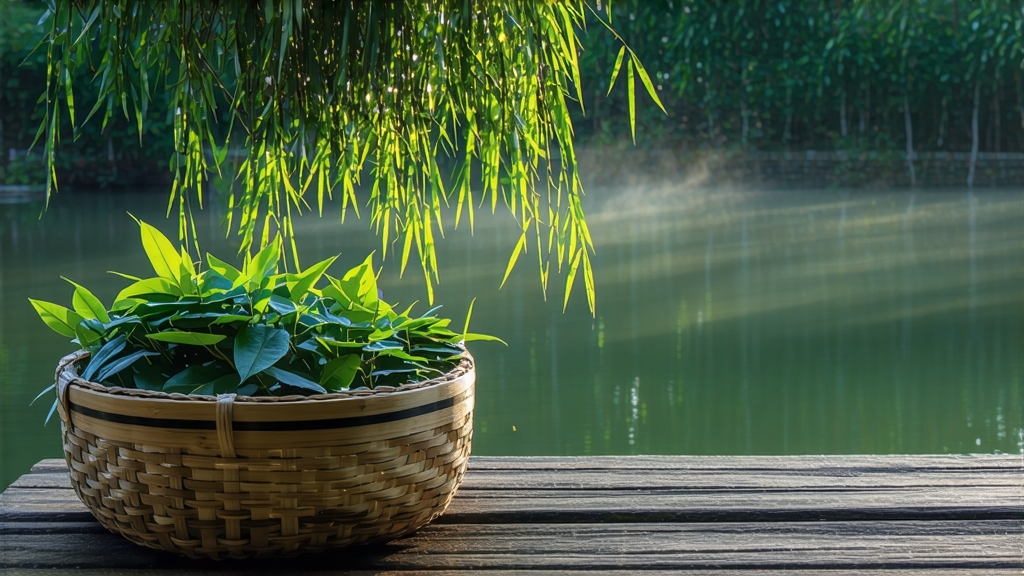
Longjing, literally “Dragon-Well,” is not merely a green tea; it is a liquid manuscript of Chinese aesthetics, geography, and etiquette. Nestled in the hills that cradle Hangzhou’s West Lake, this tea has transcended its role as a beverage to become a cultural emblem, praised by emperors, poets, and modern connoisseurs alike. To understand Longjing is to listen to the slow murmur of Chinese history, felt through the warmth of a celadon cup and the faint scent of toasted chestnut rising in early-morning light.
Historical roots reach back to the Tang dynasty (618-907), when the area around West Lake was already recorded as producing “fragrant buds.” Yet Longjing’s mythic status crystallized during the Qing. Legend claims that the Qianlong Emperor, while visiting the Hugong Temple south of the lake, plucked a handful of leaves from the front-yard bushes and tucked them into his sleeve. After returning to Beijing he discovered the leaves had retained their aroma; he immediately canonized the eighteen bushes as “Imperial Tea Trees,” a designation still guarded by fences today. Whether apocryphal or not, the story illustrates how political power, terroir, and narrative intertwine in Chinese tea culture.
Geographically, authentic West Lake Longjing is micro-classified into five sub-zones: Lion (Shi), Dragon (Long), Cloud (Yun), Tiger (Hu), and Plum (Mei). Among them, Lion Peak (Shi Feng) commands the highest esteem. Granite-based soils, mist from the lake, and diurnal temperature swings coax the leaves into accumulating more theanine, yielding a sweeter, silkier infusion. Moving outward to the greater Qiantang or even Zhejiang provinces, the leaf character changes: thinner body, sharper edges, less enduring fragrance. Thus, the word “Longjing” on a tin is no guarantee of provenance; savvy drinkers look for the small, almost square leaves that resemble the Chinese character for “one” (一) laid flat, a shape achieved by expert hand-pressing against the wok.
Crafting Longjing is a choreography of heat, timing, and muscle memory carried out between 5 a.m. and 10 a.m. when the dew-weighted shoots are still cool. Picking follows the golden rule of “one bud, one leaf” or occasionally “one bud, two leaves,” never longer than 2.5 cm. The plucked shoots are sifted, then withered briefly on bamboo trays to shed surface moisture without losing the vibrant green. The critical act is pan-firing (shaqing) in a seasoned iron wok heated to 80-100 °C. Masters use only their bare hands, rubbing, pressing, and flicking the leaves in cycles lasting less than four minutes. The motion coaxes moisture from the epidermis while locking in chlorophyll and aromatics; the same movements flatten the leaf into the iconic sword shape. After the first firing, the temperature drops to 60 °C for a second “reasoning” round, then a final gentle toasting at 40 °C. Total production time for 250 g of top-grade tea: roughly four hours of continuous labor performed by a single pair of hands. Machines exist, but they cannot replicate the micro-adjustments that prevent scorching yet achieve the nutty bouquet.
Chemical transformation is equally intricate. Polyphenol oxidase is swiftly denatured, freezing the leaf in a green state; meanwhile, Maillard reactions between amino acids and reducing sugars create pyrazines responsible for the toasted chestnut note. The ratio of caffeine to theanine hovers around 1:2 in spring-picked Shi Feng, explaining why drinkers report calm alertness rather than jittery stimulation.
Brewing Longjing is an exercise in restraint. Begin with 3 g of leaf for 150 ml of water at 80 °C. Glassware is preferred—not for mere aesthetics, but because the vertical “dancing” of leaves offers real-time feedback on quality. First infusion: 30 seconds, pour to the rim so floating leaves are submerged. Second: 20 seconds; third: 40 seconds. A fourth is possible if the leaf is village-grade or higher. Watch for the “three greens”: dry leaf, liquor, and infused leaf all maintaining a consistent jade hue. A yellowish liquor signals over-firing; a muddy olive points to storage mishaps.
Tasting follows a three-breath rule. Sip, hold on the tongue, breathe in gently through the nose; volatile aromatics ascend the retronasal passage unveiling layers: fresh fava bean, steamed rice, then the signature long